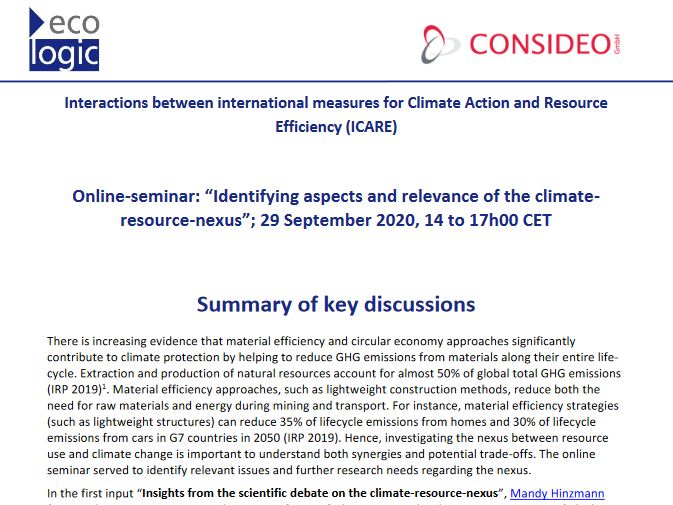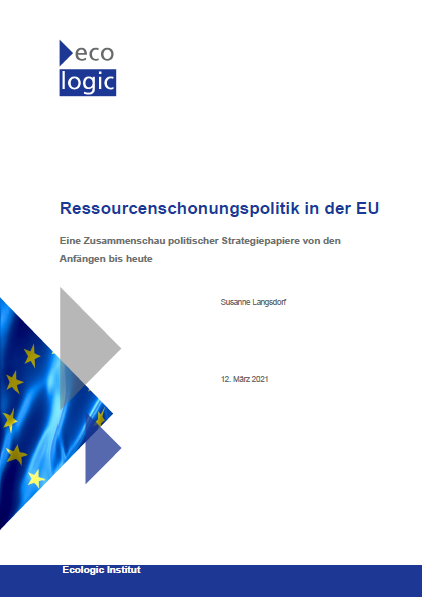
-
Identifying Aspects and Relevance of the Climate-resource-nexus
- Event
- Date
-
- Location
- online
- Speaker
Implementing ambitious climate protection is the central contemporary environmental policy issue on international and supranational level. Stepping up climate protection is urgently needed in order to prevent dangerous climatic change and achieve the goals of the 2015 "Paris Agreement" to limit global warming to well below two degrees. Analyses of existing national determined contributions (NDCs) show a significant gap between the necessary and the expected reductions in greenhouse gas (GHG) emissions through implementing the NDCs. Bridging this gap will require close coordination and integration of climate policy with other (environmental) policy fields to exploit synergies and to identify and minimise possible trade-offs.
As extraction and production of natural resources account for almost 50% of global total GHG emissions, resource conservation and circular economy hold particularly promising potential. For instance, using recycled materials reduces energy needs along the value chain compared to virgin materials and thus yield climate benefits: associated GHG emission savings range between 40 to 80%. In addition, lightweight construction methods reduce both the need for raw materials and energy needed during mining and transport. In the construction sector, using lightweight structures in residential building construction could save 8–10% of GHG emissions in the G7and China.
While science increasingly explores the nexus between resource use and climate change (the climate-resource-nexus) in recent years, much still needs to be better understood and more systemically analysed. A review of scientific literature revealed three main thematic areas related to the nexus of climate and resource policies:
- a) Investigation of the resource demand of climate-friendly technologies: This perspective describes the relation of climate and resource policies as a trade-off – climate-friendly technologies (like renewable energies, electric cars, etc.) on the one hand reduce greenhouse gas (GHG) emissions, but on the other hand increase the demand for raw materials, particularly metals.
- b) Potential greenhouse gas savings through resource efficiency: This perspective views the relation of climate and resource policies as synergies – measures to increase resource / material efficiency can reduce GHG emissions.
- c) The role of circular economy (CE) approaches for climate change mitigation: This perspective also sees synergies in the relation of climate and resource policies, but focuses more on end-of-life CE strategies such as re-use, recycling and waste avoidance, which can help reducing GHG emissions.
This ICARE-project (ICARE stands for 'Interactions between international measures for Climate Action and Resource Efficiency') online seminar served to discuss issues and relevance of the climate-resources-nexus among academic institutions. Mandy Hinzmann from Ecologic Institute, Dr. Thomas Gibon from Luxembourg Institute for Science and Technology LIST and Prof. Edgar Hertwich from Norwegian University of Science and Technology NTNU presented findings of recent research projects dealing with the nexus.
The presentations of the speakers and a brief summary of main discussions is available for download.







